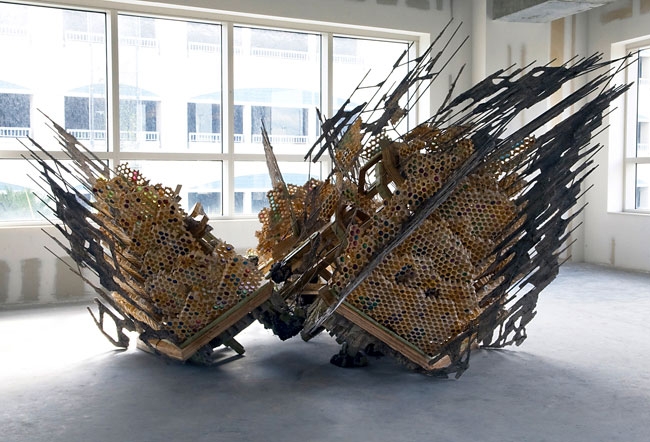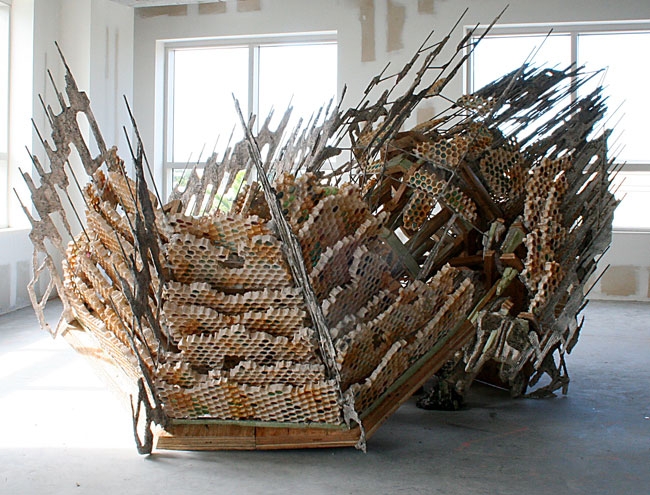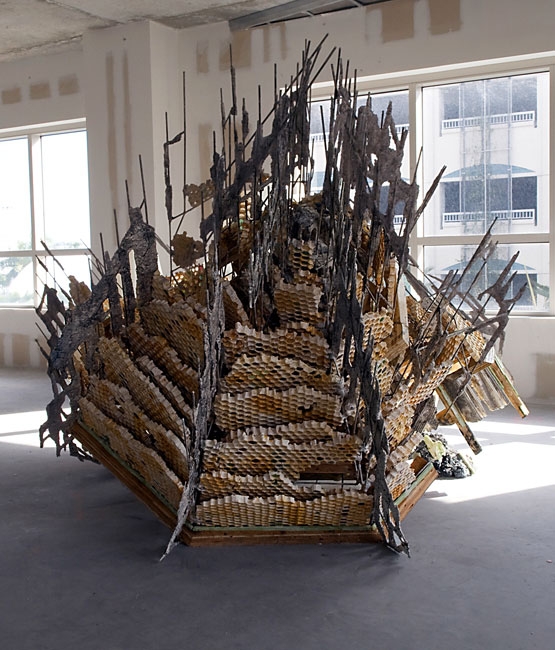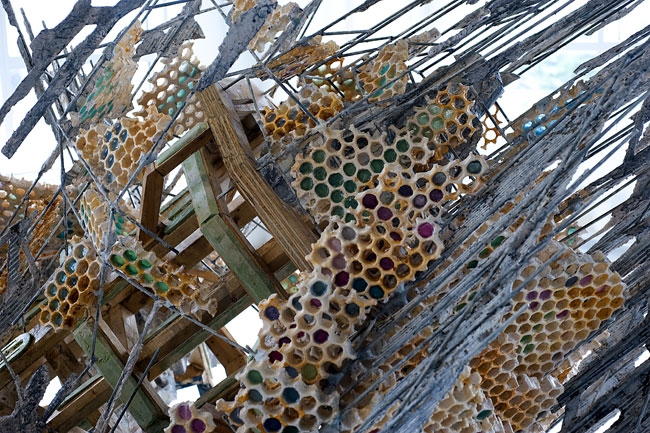Diana Al-Hadid evokes the Biblical myth of the Tower of Babel from the Book of Genesis, via the famous 1563 painting of this building as a utopian structure by Pieter Breughel the Elder.
Opposing the verticality of an unstable edifice built skywards like an ascending spiral, as in the Flemish painter’s depiction, the monumental sculpture Built From Our Tallest Tales bears witness to the collapse of an architectural model. It falls and shatters to reveal the principles of its foundation. Built by repeating an octagonal geometrical motif, the wooden structure supports a metal armature in the style of Late Gothic tracery. The arches occupy different levels of the tower and underscore the structural precariousness of the edifice which, even in Breughel’s early vision, seemed to reveal man’s fallibility.
The materials – concrete, metal, fibreglass – are those of a contemporary construction, and are doubled up by honeycomb panels in coloured resin. The mosaic formed by these beehive-like panels also brings to mind Islamic ornamentation. These panels structure the overall sculpture along an axonometric perspective which seems to materialise the different floors of the building. Thus human construction meets natural construction in an ideal building which bears witness to the unfailing communication needed to accomplish any collective undertaking, which here is imperilled by its own excess.
At the origin of the Babel myth, the idea that men once formed a single whole speaking the same language before they were scattered over the face of the earth. The artist evokes this myth by achieving a synthesis between east and west, mixing cultural identities by linking the mythical construction in Babylon of a tower meant to reach heaven with the construction of medieval churches in Europe, all the way to the recent collapse of the World Trade Center in the United States.
Vérane Pina
Translated by Charles PenwardenÂ





Follow us on: